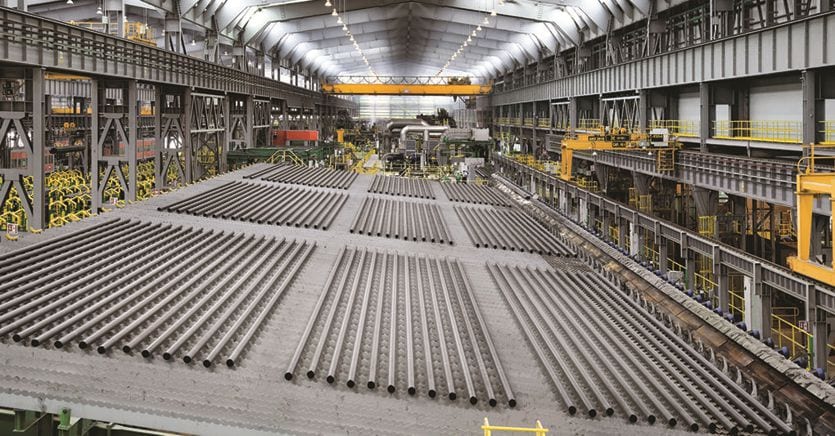In a new normal scenario projected, at least in Europe, towards a progressive decarbonisation accompanied by questions about energy costs for companies, TenarisDalmine confirms its hold in the traditional reference markets of oil & gas and automotive, but tries to propose itself with conviction also as protagonist of the energy transition, both in terms of external and internal business opportunities, with energy efficiency and emission reduction programs that see Italian sites at the forefront of the group’s global commitments.
Paradigmatic signal
A paradigmatic signal, from this point of view, is the 15 thousand ton order to supply pipes related to the Equinor carbon capture project in the North Sea. «It is the first order of significant size that we are dealing with in this area – confirms the CEO of TenarisDalmine, Michele Della Briotta -, even if we are following Eni’s projects in Ravenna and are evaluating other opportunities in the UK. We will work on the Equinor order from March to June ».
From hydrogen to geothermal
But in general, the range of application of the group’s products in the non-oil world is broad. They range from hydrogen – for the transport of which TenarisDalmine already produces maxi-cylinders in special steel, but which in the future may also need a pipe-line – to geothermal. «These are niches – explains Della Briotta -, but they are growing at a very rapid speed. We have identified about 350 energy transition projects in the world that, between now and 2030, will potentially see the use of our products, for a value of 350 billion dollars. It must be considered – adds the CEO – that the offshore oil & gas sector today cuba around 250-300 billion a year. The substitution effect is still a long way off, but the road has undoubtedly been taken ». Specifically for large vessels for hydrogen, the Italian and European plants should already reach saturation within the next three years; in general, even if this type of sector on a world level still has an incidence of less than 10% of the total turnover of the Group, in Italy and in Europe the incidence percentage is already double-digit.
The home front
The process of transformation towards the outside is accompanied by the effort to manage the energy transition on the internal front. A theme that is becoming more and more central, after the price rush of the last few months. «Tenaris – explains Della Briotta – has made a public commitment: to reduce CO2 emissions by 30% by 2030. It is an important commitment, which also involves units outside Europe. But Italy can act as a pivot: we are making a considerable engineering effort to invest in the use of renewable energies and energy efficiency ». The CEO cites, by way of example, the recent investment in the capacity to roll large tubes, which “allows for a one percent reduction in emissions, because it avoids a transition from the primary to the secondary rolling mill.”
The recycling
On the waste recovery front, a project is underway to start a pilot plant to capture the CO2 emitted by the Dalmine plant: “we will try to use funds made available to the NRP – he explains -, or resources available at the European community level” . The most important project, but also the most difficult to carry out, finally has to do with the possibility of using hydrogen within the production cycle. The plan, announced at the beginning of 2020, sees the involvement of Snam and Edison. Also in this case, according to Della Briotta, the resources deployed by the national resilience plan will play a fundamental role. «The plan is ambitious, but expensive – explains the CEO -. On balance, it would lead to an increase in the company’s operating costs in the order of 10-15%, but with the current scenario of costs related to gas and CO2 it is difficult to imagine a grounding of the project in the short term and the accounts they will probably need to be redone. It is a great leap forward, in a market context which, at the moment, apart from the automotive world, is not ready to recognize a tangible value in the efforts made in terms of sustainability ». However, the company remains convinced of the correctness of the choice: in recent months an investment has been put in place together with Tenova, Techint and Snam, to begin adapting the plants to the use of hydrogen, installing burners ready to be fueled by hydrogen. in the treatment furnaces of Dalmine.
